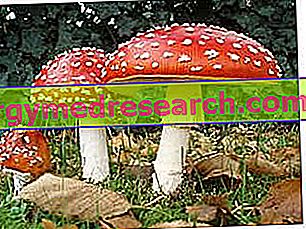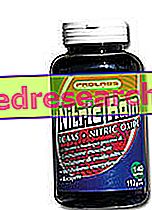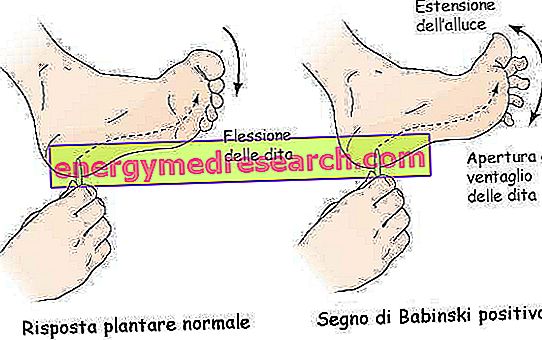Introduction to mushroom toxicity
The first essential notion to keep in mind when assessing the edibility or toxicity of fungi is as follows:
"Fungus, qualiscumque sit, semper malignus est" - The fungus is always harmful to health, whatever it is.
The toxicity of the fungi is distinguished in intrinsic (own) and extrinsic toxicity, the latter originating from the environment in which it is found and which foresees the contamination from: chemical principles, radioactive agents and heavy metals.

NB . Mannitol, a chemical component of fungi often present in high concentrations, can also generate gastro-intestinal disorders such as osmotic diarrhea.
In addition to intolerances, mushrooms can give rise to real allergies; the human immune system reacts in a typical way to some specific varieties (such as Paxillus involutus ), which trigger the reaction only from the second consumption (after a first phase of hypersensitivity). However, the allergic damage that fungi can cause to the body may also depend on a hereditary enzyme deficiency linked to the expression of trehalase, the specific enzyme that converts trehalose (glucide) into glucose.
The presence of hypersensitizing and / or toxic principles in mushrooms is therefore correlated both to intrinsic factors of the various species and to the habitat of the fungus, as well as to the cooking method, to the dose, and also to the subjectivity of the consumer.
Mushroom toxins
Mushroom intoxications can be classified into two large branches:
- Those that do NOT directly affect mental functions
- Those that determine psychological alterations.
Among those that do NOT directly affect mental functions we recognize:
- Phalloid poisoning: deadly, late, caused by Amanita phalloides, Amanita verna, Amanita virosa .
- Parafalloidic intoxications: often deadly, even late, caused by Lepiota belveola and Cortinarius orellanus .
- Muscarinic intoxications: almost never fatal, caused by Amanita muscaria, Amanita pantherina, Clitocybe rivalosa, Clitocybe dealbata, Clitocybe cerussata and Inocybe patouillardi .
- Inconsistent or conditional poisoning: sometimes serious and even fatal, caused by idiosyncratic phenomena, irregular in manifestations and and molitic, caused by Gyromitra esculenta and some Coprins such as Coprinus atramentarius .
- Intoxications caused ONLY following RAW consumption: caused by some Morchellas and Sarcosphaera coronaria .
- Intoxication of gastrointestinal type: sometimes as serious as those caused by Entoloma lividum, Tricholoma tigrinum and Clitocybe olearia, others less worrying and caused to many other fungi.
- Botulinum poisoning: due to the consumption of fungi altered by the anaerobic bacterium Clostridium botulinum .
Among those that determine psychological alterations:
- Intoxications that affect mental manifestations, or psychotropic actions: fungi that cause excitement, aphrodisism, hysteria, such as Amanita muscaria and perhaps Amanita pantherina .
- Hallucinogenic mushroom poisoning: different species of the genera Panseolus, Stropharia, Psilocybe and some Lycoperdon of tropical countries.
- Mushroom intoxications with ergotin action: Claviceps purpurea .
Dangerousness of toxic mushroom syndromes
Mushroom intoxications are better called mycetisms and are distinguished, based on the time span between the ingestion of fungi and the appearance of the first symptoms, in: long-term latency syndromes and in short-term latency syndromes.
Those with long latency are irreversible and appear from 6-8 hours or after 12-24 hours or after 6-7 days; those with short latency, rarely fatal, occur immediately after ingestion, from the first 15-30 minutes to the next 3-6 hours.
NB . The precocity of the symptom leaves time for the rapidity of the curative intervention which mostly concentrates with the removal of fungi not yet fully digested and absorbed.
Management of mushroom poisoning
The management of fungal intoxication starts early, that is from the simple doubt of the presence of intoxication symptoms. The signs and symptoms that can occur are many and extremely heterogeneous: from psychological disorders to severe and aggravating clinical pictures.
Ultimately, to effectively combat mushroom poisoning it is necessary to intervene promptly by relying on the hospital structures which are entrusted with the decisive intervention; waiting, if possible:
- free the stomach (induced vomiting)
- Free the intestine (impossible to manage at home or in the field)
- Apply hot water tablets for hours and renew at least every 15 minutes.
Bibliography:
- Poisonous and toxic mushrooms - P. Angeli, E. Lazzarini, R. Para - Hoepli - pag. 9-10; 25:32
- Mushrooms - L. Fenaroli - Giunti - pag. 5-6; 12.



